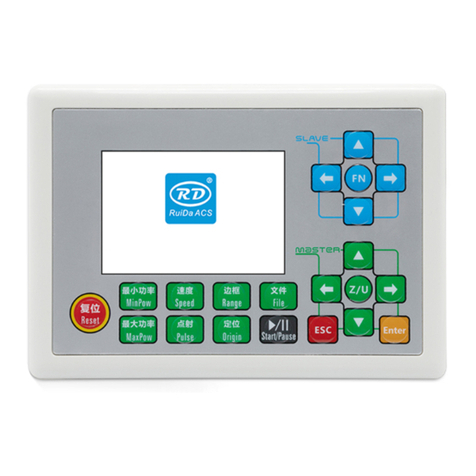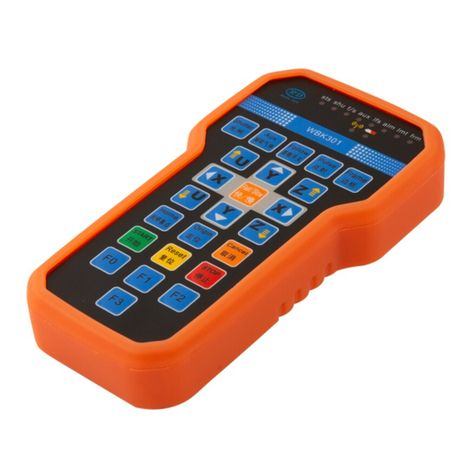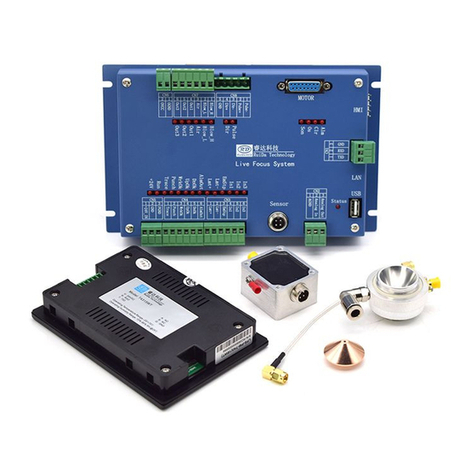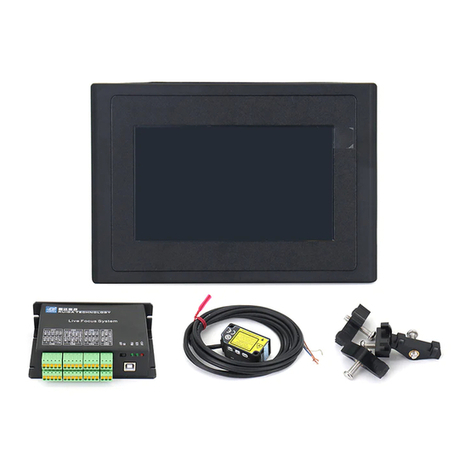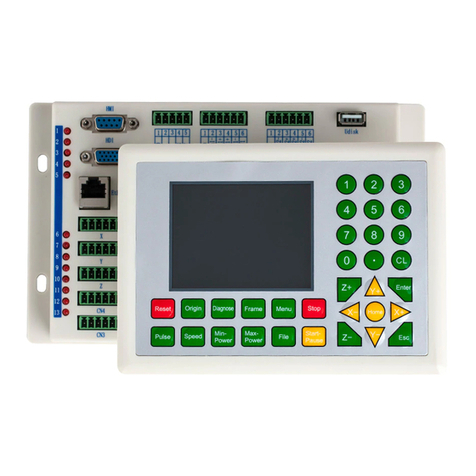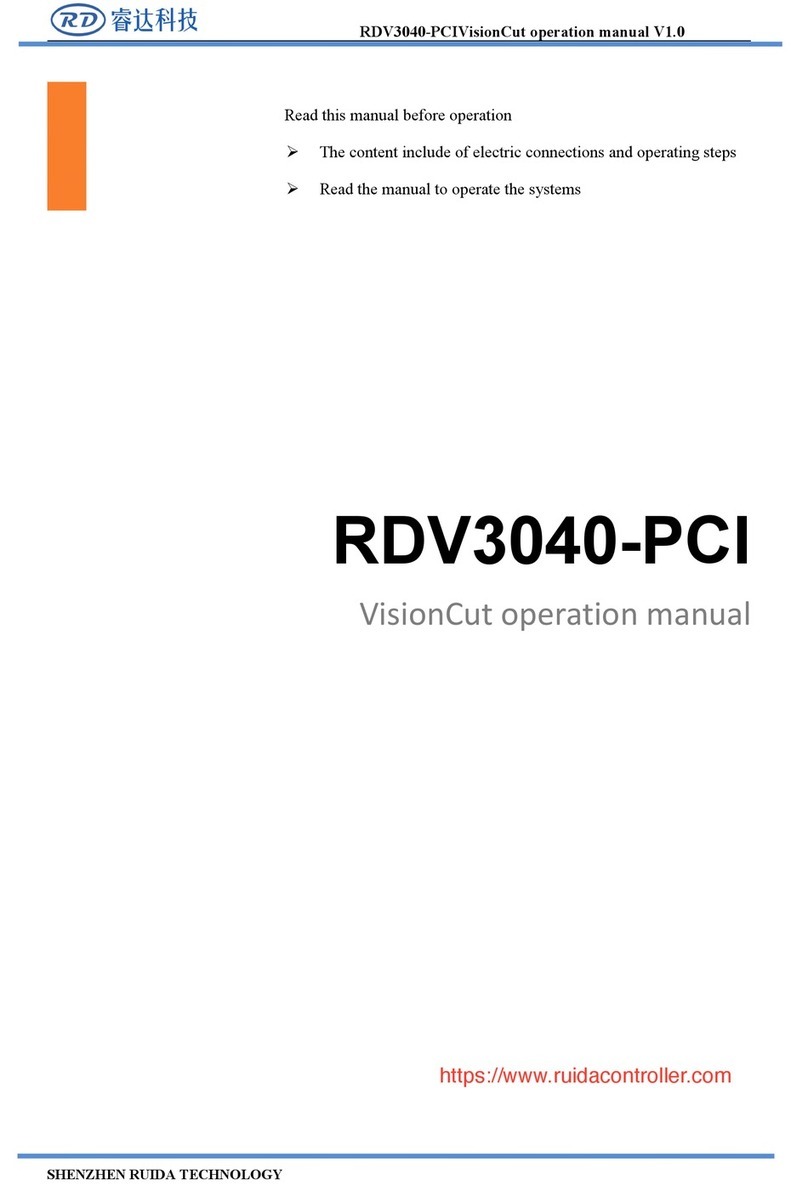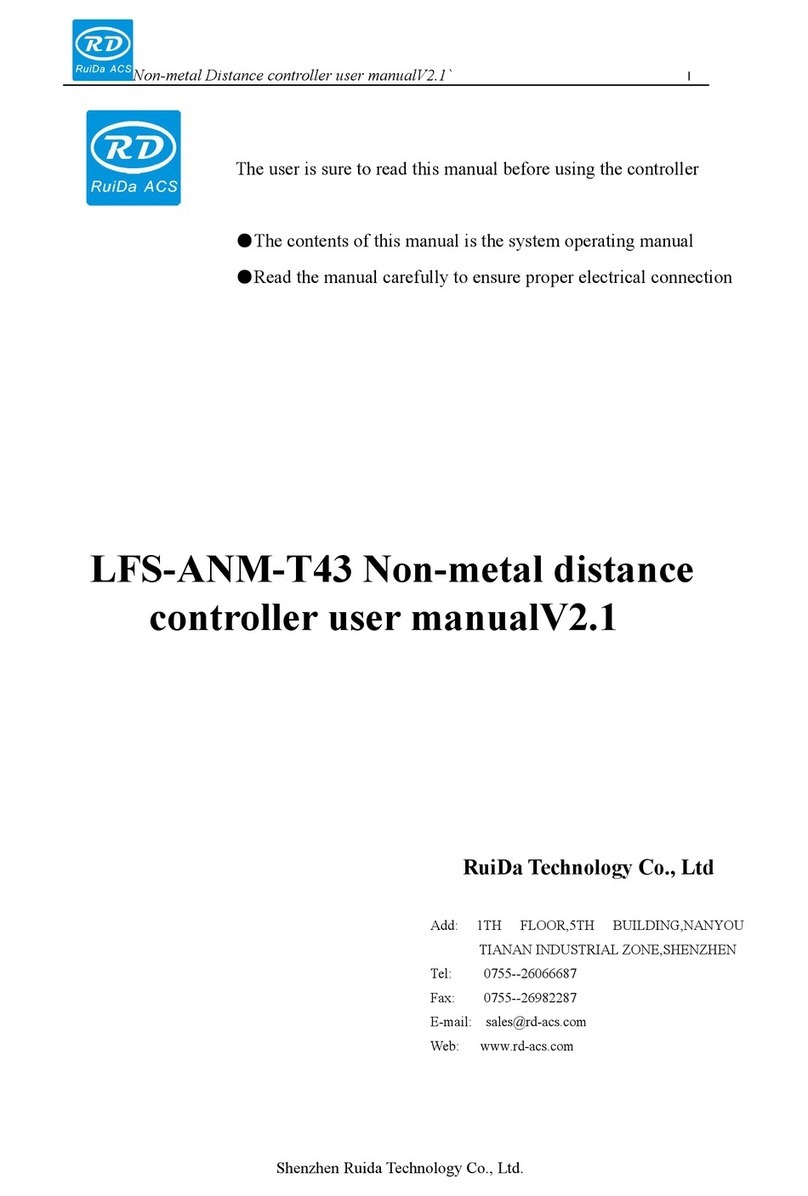RDLC320 Controller User Manual
2/45
© 2016 Ruida Technology. All Rights Reserved.
CONTENTS
Copyright Declaration................................................................................................. 4
Chapter 1 Overview..................................................................................................... 5
1.1 Briefing............................................................................................................ 5
1.2 Description of Controller Model...................................................................... 5
1.3 Comparison of Controller Performance........................................................... 6
Chapter 2 Installation Dimension..........................................................................7
2.1 Installation dimension of IO Interface Board...................................................7
2.2 Panel Dimension.............................................................................................. 8
Chapter 3 Pictures and Interfaces......................................................................... 9
3.1 Picture of Main Board...................................................................................... 9
3.2 Picture of Panel................................................................................................ 9
Chapter 4 Description of IO Board Interface Signal.............................................. 10
4.1 Interface of Main Power Source CN1............................................................10
4.2 Panel Signal-Cable Interface HMI................................................................. 10
4.3 General Output Port CN2...............................................................................10
4.4 3-axle Spacing and Special Input Interface CN3/CN4...................................11
4.5 X/Y/Z-axle Motion Drive Interface............................................................... 12
4.6 Laser Power Control Interface CN6/CN7...................................................... 13
4.7 Water Protect Input Interface CN5.................................................................14
Chapter 5 Examples of Laser Power Interface...................................................15
5.1 Digital Laser Power Supply of Glass Tube.................................................... 15
5.2 Analog Laser Power Supply of Glass Tube................................................... 15
5.3 RF CO2 Laser................................................................................................ 16
Chapter 6 Examples of Driver Interface for Step-servo Motor............................. 17
6.1 Overview........................................................................................................ 17
6.2 Valid Rising Edge for Pulse Signal................................................................ 18
6.3 Valid Falling Edge for Pulse Signal............................................................... 18
Chapter 7 Examples of IO-port Wiring................................................................ 20
7.1 Input Port........................................................................................................20
7.2 Output Port..................................................................................................... 21
Chapter 8 Man-machine Interface Operating Instruction.....................................22
8.1 Introduction to the Main Interface................................................................. 22
8.2 Introduction to the Keys.................................................................................23
Chapter 9 Manufacturer/User Parameters Explanation.....................................34
